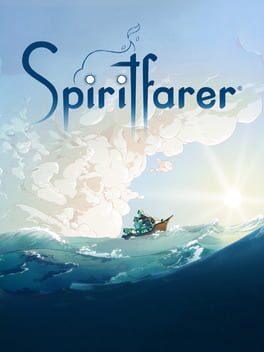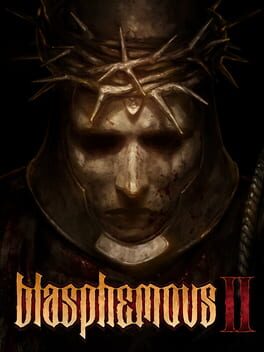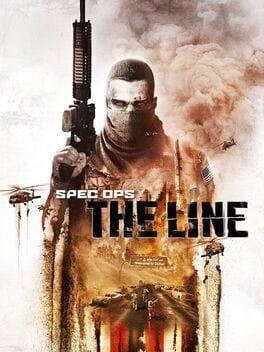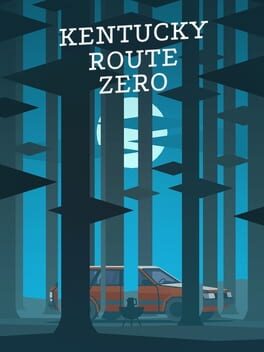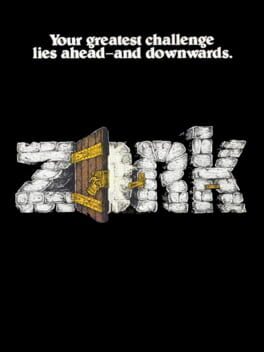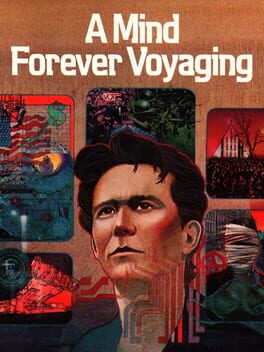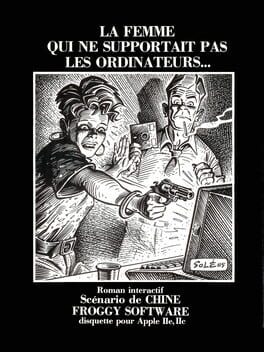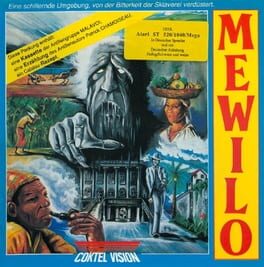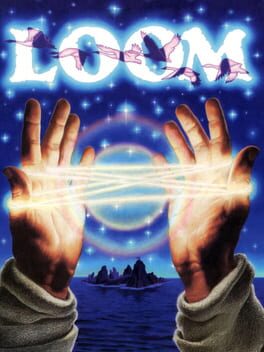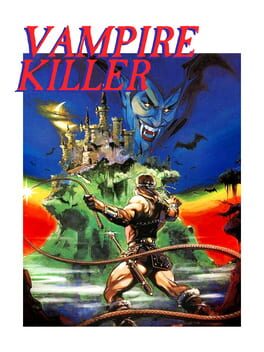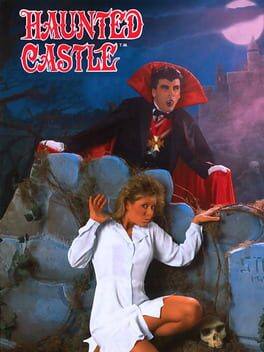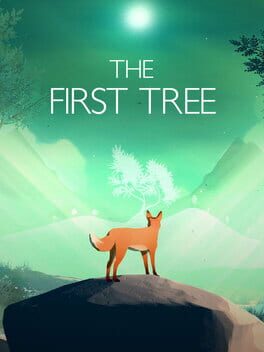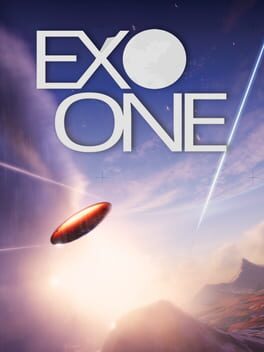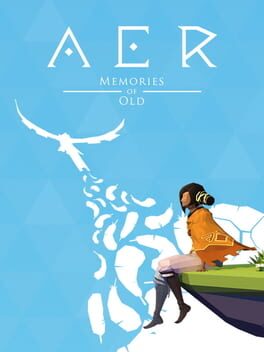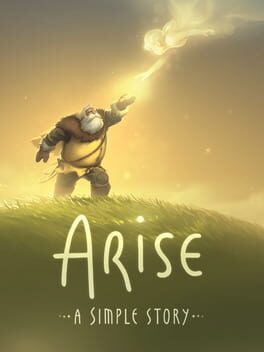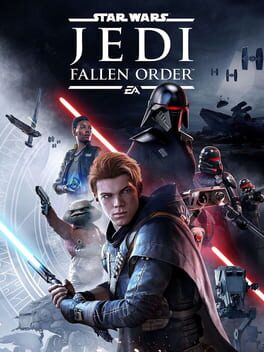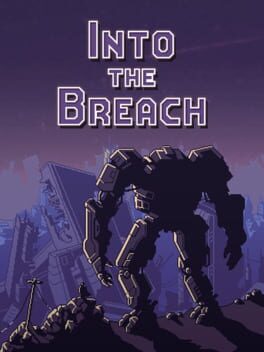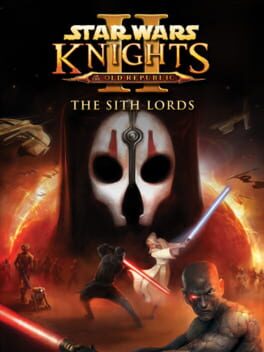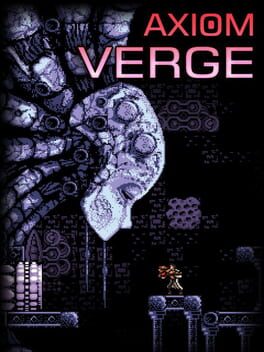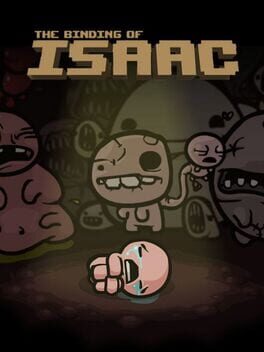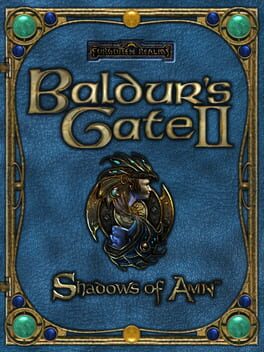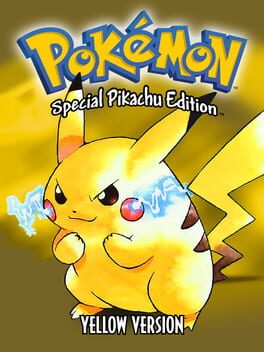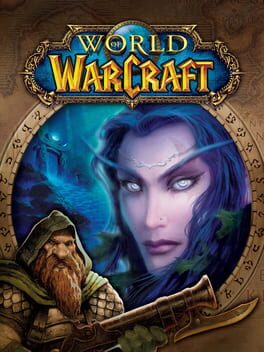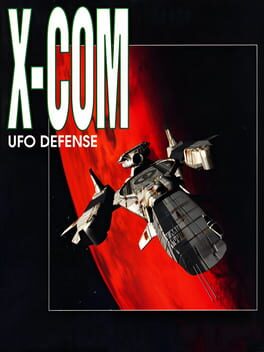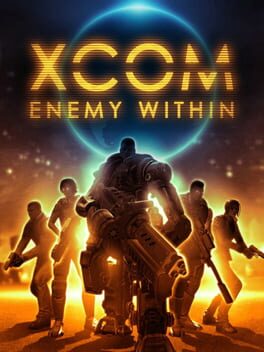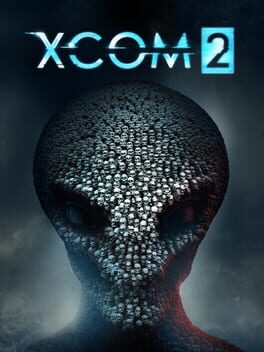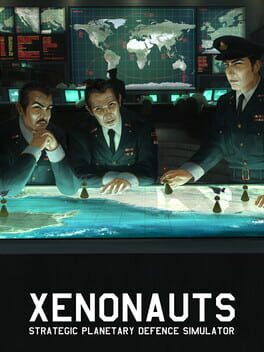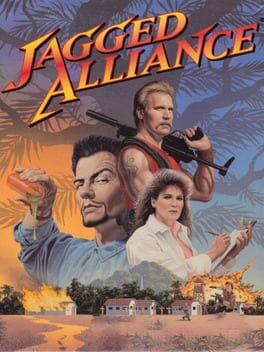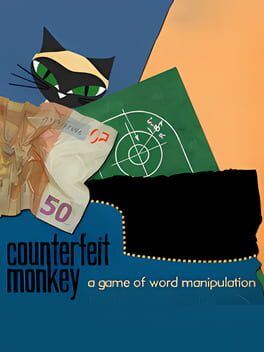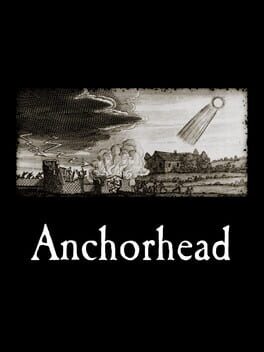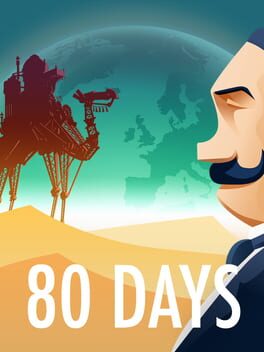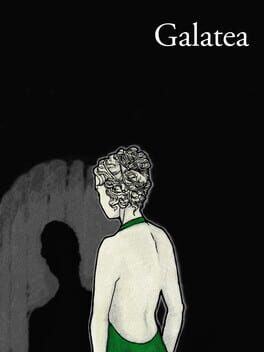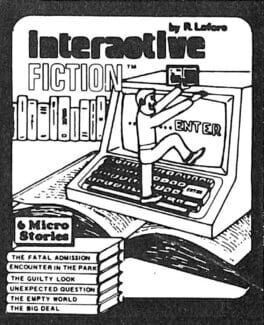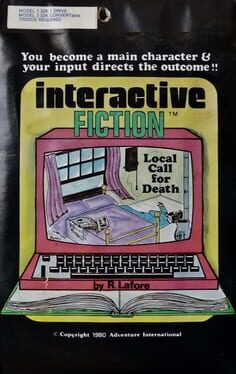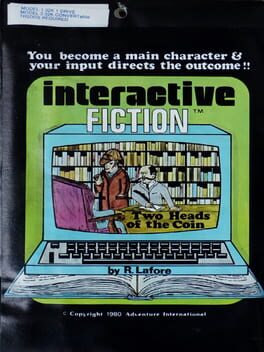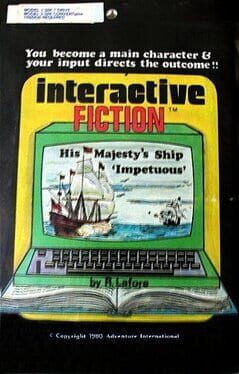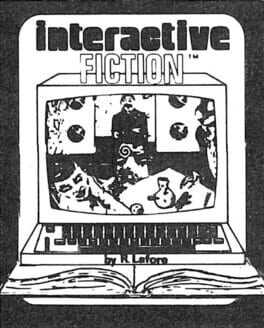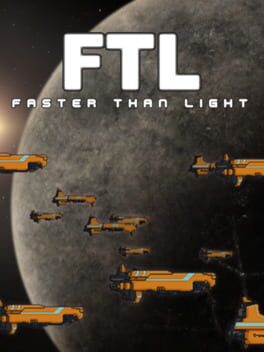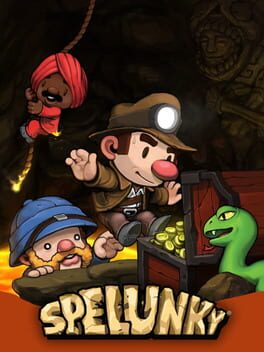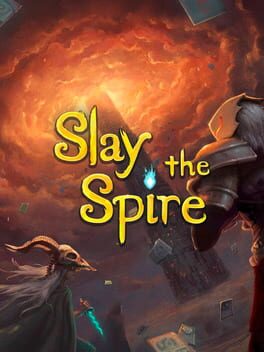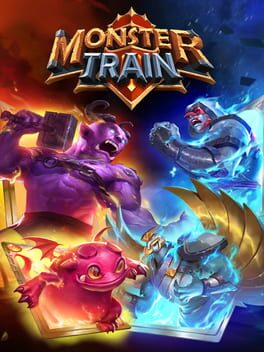KnownUnknown
27 reviews liked by KnownUnknown
Some self-serious hacks with no apparent interest in making a video game at all try to do their own GONE HOME while cutting every corner imaginable.
Shoves the most tired, obvious, weak, and unearned sob-story shit down your throat without offering even the barest pretense of interactivity or exploration to justify itself. I'm definitely not one to rip walking simulators by default, but seriously, this IS JUST a movie where you hold W and do some incredibly shitty faux-motion control things to keep it from pausing itself. And I wish it had been a movie, because if it were, it would have been ignored in that universe rather than feted endlessly by the no-taste-having idiots who write about games professionally, prompting me to have to one day play it.
Best parts of this were all the leaden and self-conscious references to things like Grey Gardens and Blow Out and Halloween and SUPER MARIO BROS. because, to paraphrase the saying, they briefly reminded me of things I'd rather be doing.
I was going to give this like 1 1/2 stars for some of the cute visual stuff, but then I got to the part where you get to play as a baby in first-person as they drown to death, and yeah, the people who made this game can suck my dick from the back.
Shoves the most tired, obvious, weak, and unearned sob-story shit down your throat without offering even the barest pretense of interactivity or exploration to justify itself. I'm definitely not one to rip walking simulators by default, but seriously, this IS JUST a movie where you hold W and do some incredibly shitty faux-motion control things to keep it from pausing itself. And I wish it had been a movie, because if it were, it would have been ignored in that universe rather than feted endlessly by the no-taste-having idiots who write about games professionally, prompting me to have to one day play it.
Best parts of this were all the leaden and self-conscious references to things like Grey Gardens and Blow Out and Halloween and SUPER MARIO BROS. because, to paraphrase the saying, they briefly reminded me of things I'd rather be doing.
I was going to give this like 1 1/2 stars for some of the cute visual stuff, but then I got to the part where you get to play as a baby in first-person as they drown to death, and yeah, the people who made this game can suck my dick from the back.
Why is this narrated? The direction for performances flatten every spoken line, which in themselves offer no setting dynamism or effective characterisation, and collapse the individual voices of the game's cast into a single barely awake drone. The chase for seriousness is maddening with this understated read; every Finch is already a parody character, so aggrandised is their position in this world, keeping quarters as if they are consorts of many themed Ikea complete room renovations - a gross misunderstanding of art design, in my opinion: it contrasts the magical realism, or heightened reality, of the house's architecture and possible supernaturalia with an utterly mundane and ill-courted seeming interiored juvenilia of daily life. How at home are we meant to feel with the glowing house in the harbour when looking out of what is effectively a wizard's tower if the room is coated in kid's stickers and hunting gear? The script itself is barely more than descriptive, and is completely redundant to the game - if this had shipped nearly wordless, playing through each of the segments with no narration from Edith, it would have strung together a surreal but obvious link between a people whose downfalls seem tragic in the traditional sense. With the VO, and presentation for about half of the Finch fam, they all read as gullible, immaterial, or idiotic. Imagine reading Dubliners and instead of having described to you the rigour and depth of inner life extent to the city and human condition, everybody was a bit floaty and got hit by passing trains or choking on pheasant bones. UGH
Spiritfarer
2020
I’m sorry, Spiritfarer. I never really gave you enough of a fighting chance, and you came back right when I needed you again. Consider this review my apology.
After playing through That Dragon, Cancer this summer, I realized that I wasn’t being fair to this genre of “games for impact.” We don’t all play games for the same reason. Sure, plenty of games market themselves as straight entertainment, played for pleasure and excitement. But there are games that aim to not necessarily be fun, but rather be compelling. Games that seek to provoke a wide range of emotions and questions rather than just provide means to an end.
Spiritfarer was one such title that I admit I originally approached with the wrong mindset. It did not do me any favors to rush through in order to complete the game on my limited PC Game Pass, or to try and move onto the next title on my growing backlog, because this is a game both about taking your time while making the most of every moment possible. I also found myself stymied by the supposedly “shallow” gameplay loop while also complaining about its excessive runtime. That’s why upon my second playthrough of Spiritfarer, finally buying my own copy on Steam, I found myself constantly surprised and overwhelmed that all of these preconceptions turned out to be wrong. It all starts by properly contextualizing Spiritfarer’s appeal and purpose.
Just like That Dragon, Cancer, Spiritfarer grapples with the omnipresence of death differently. Death may be a game mechanic, but it is not a punishment; rather, it is the final destination. Heavily inspired by Spirited Away’s hotel for spirits, Spiritfarer tackles one important question; what if we didn’t fear death as much? As part of the Death Positivity movement, the game encourages its players to think of death as more than just a mechanism or taboo subject, and to have healthy and open conversations as to speak more freely regarding all the consequences and feelings surrounding it. To better handle its subject matter, Thunder Lotus focuses the gameplay loop on preparing you to care for souls at the end of their lives as well as the various processes associated with the cycle of grief.
As the newly dubbed Spiritfarer, the player character as Stella must find lone spirits scattered across the vast seas, and handle their final requests. These requests can range from a variety of fetch quests, to constructing little homes and decorations for them, to feeding them their favorite meals and handling their last regrets and affairs with other characters. As a backbone for this request structure, Stella must construct other various facilities and travel to other locales to gather resources and both upgrade the ship and gain new abilities to access new events. Once these last requests have been fulfilled, the spirit will ask to be taken away to the Everdoor, and pass on to the afterlife.
One particular complaint kept popping up in the back of my mind as I fulfilled my duties. A year ago, a close friend and I had a discussion regarding Spiritfarer, when he complained that Spiritfarer didn’t feel cozy at all. If anything, he felt pressured and constantly anxious that there was always something more to do. There were new crops to tend to, or more ore to smelt, or more fish to find and more dishes to cook, and so on so forth. I certainly related to his dilemma; in fact, during quiescent nights where I had the option to go to sleep to start a new day, I often found myself cleaning up my remaining tasks and frantically checking my stockpiles to see if anything else had to be worked on. I simply could not afford to lose time; if daytime was the only acceptable time to travel in order to explore new islands, then even my nighttime had to be optimized to fulfill my obligations and stay “on schedule.”
It was then that I realized, that there was a method to Spiritfarer’s madness. This constant state of scrambling and juggling tasks to keep everyone happy that had made me feel so uncomfortable… was the same exact state experienced by those in palliative care. Moreover, those were the same feelings that my family went through when taking care of my grandmother and grandfather on my mother’s side during their last years. They were often fickle with exactly what had to be done; sometimes, I didn’t know if they even knew what they really wanted. We often left my grandma’s apartment with this sense of restlessness that kept us up at night, unsure if there was even anything left we could do to ease their final moments. It was this delicate but never-ending push and pull that we had become so accustomed to, that I had almost forgotten the sensation after my grandma left us in March 2020. I can sincerely say that no other video game I have ever played has forced me to reconfront my feelings and memories from back then… and I can’t help but respect Thunder Lotus for the audacity to not only address it, but also impart those feelings so effectively through gameplay as an compelling example of player perspective.
To Spiritfarer’s credit, I later came to understand that this sense of coziness is not lost at all, because there are plenty of surrounding elements that alleviate this heaviness. The art style, as well as the color palette, are key factors; the graphics are heavily influenced by the Japanese woodblock painter Hiroshi Yoshida, which the lead artist stated as “bringing [her] serenity.” That tranquility and desire to explore the landscape was a key motivation behind the lush and vibrant environments of Spiritfarer, combined with the use of soft pastels and a lack of the color “black;” darkness is instead communicated through softer alternatives such as dark reds, blues, and greys. It’s not without its use of contrast either (see: Bruce and Mickey’s “McMansion” of clashing red and white), which both allows the game to express more clearly express character personalities while providing the opportunity to allow for the player to experience “negative feelings” such as sadness in a softer environment. Finally, Spiritfarer’s fluid hand-drawn animation also breathes life into its many characters while promoting mobility through Spiritfarer’s expressive gameplay.
Spiritfarer also shows further care in establishing mood and ambience as to gently tuck players into an emotional experience outside of the art style. Firstly, Max LL’s accompanying soundtrack appropriately imparts moods without the need for excessive flair and gusto. Simple piano, string, and flute melodies provide ambient backdrops in tunes such as At Sea or At Night. More exotic instruments play important parts in tracks such as Furogawa to convey curiosity, or more upbeat pieces such as Hummingberg excite players into romping around the island to soak in the sights. Then, you’ve got your frenetic tunes such as Freeing the Dragon and Pulsar Pursuit to spur the player into action and snag as many timed collectibles as possible to assuage the spirits’ wants and fears. Finally, epics such as Last Voyage convey emotional upwellings through volume swells while establishing a sensation of finality to bring journeys to a close. Honestly, I couldn’t have asked for a more fitting soundtrack to instill a sense of adventure for Spiritfarer while appropriately illustrating more thoughtful moods along the way.
Secondly, while many post-death games are often filled with hostile and frightening creatures, Spiritfarer instead chooses to surround the player with friendly and welcoming personalities. Of course, there’s the spirits themselves; while some spirits can initially come off as aloof or even acerbic and uncompromising at times, you soon get to learn more about their backstories and interests that allow you to warm up and celebrate with them. Around the vast expanses of Spiritfarer are also many sea creatures and island inhabitants that are sincerely interested in you, with many going out of their way to help you in your role of caring for your friends. There’s also a lot of silly “dumb” jokes and melancholy humor across many of these characters to poke light fun at the world they live in and the situations that Stella finds herself in, all while providing a welcome distraction when juxtaposed with the emotional subject matter of the game itself.
Further adding to this coziness is the lack of a permanent “fail-state” within Spiritfarer. There’s no way to reach a “game-over” screen or enter a state where the player is directly punished for errors. For example, mining requires a specific timing of holding down and releasing the X button, but holding for too long doesn’t lead to negative consequences such as losing resources or health. Rather, you receive a cutely animated sequence where Stella accidentally drops her pickaxe and glances back at what happens, before she picks up the pickaxe again with a smile on her face. It’s like the game is gently encouraging you to try again; sure, you didn’t play optimally and messed up your timing, but it’s okay, for you can always give it another go. Vice versa, you’re also rewarded for playing well due to the ability to save time from optional animations and the potential to gain additional resources (i.e. cutting planks strictly by the lines gets you double the amount of planks you would have gained otherwise), but failure in these cases is not so much a permanent setback, but rather a delayed success.
Similarly, this “feeling” of failure translates to the spirits themselves. If the spirits aren’t fed properly, they will complain to Stella and have lowered mood. Again, this isn’t a permanent setback, because this mood can be risen by feeding them their favorite dishes and hugging them. Of course, there are visible consequences here to playing “well;” happy and ecstatic characters will often aid Stella by playing music to make other characters happier as well, or participate in the ship’s tasks by giving you valuable resources (raw ingredients, ingots, dishes, luxury sellables, etc). Most importantly though, these characters feel alive, both because of their written design/stories (often heavily based off the development team’s friends and families, resulting in a lot of personal investment) and because the gameplay loop of performing their last rites and caring for them creates attachment; you get to learn their histories a bit better based off the stories they tell you as they request specific chores that reflect upon their quirks and personalities.
As a result, I found Spiritfarer’s gameplay loop engaging due to its great emotional investment; not only does it give you just enough time to grow attached to spirits before sending them off, it also emulates aspects of grieving extremely well in a video game setting. For example, as characters finally depart for the Everdoor, all other characters on the ship will gather around the departing rowboat to say their farewells, similar to how friends and family surround loved ones on their deathbeds. Another example of this occurs during scripted resource gathering events scattered across the map; you would typically need to speak to a specific spirit to begin the event, but once that character has departed, Stella must instead start the event from the departed spirit’s door. This connection, as well as the inability to remove the deceased spirit’s former house (now analogous to that of a tombstone), constantly reminds the player of the experiences and memories of those who have moved on, and emulates the process of revisiting final resting places or old ramblings of deceased loved ones. Thus, Spiritfarer thoughtfully embeds traces of former spirits to instill both metaphorical meaning and surface meaning that their lives will forever remain with you. By constantly exposing the player to so many different spirits and their transitory stays, Thunder Lotus is able to properly guide players to express these healthy mechanisms that come with loss.
As a related aside, Spiritfarer, similarly to That Dragon, Cancer, utilizes the medium’s ability to capture specific instances to allow players to properly adjust for events in-game. We’ve already talked about the game’s leniency with regards to its fail-states, since every “negative” externality can be quickly superseded with the proper actions; as a result, there are no lasting consequences to playing at your own pace and no real “wrong” choices to be made. However, Spiritfarer also creates opportunities to let the player soak in emotionally-heavy moments without the passage of time interfering, such as the Everdoor scenes. Here, the player can reflect in this frozen moment in ludic space and take all the time they need to absorb the reality of the situation. But as with That Dragon, Cancer, the player must eventually progress and move on, just like real life.
My prior emphasis upon this emotional attachment to characters through the busying gameplay loop might imply that the game itself is mechanically lacking… but I honestly don’t believe that's true. Spiritfarer controls extremely well, especially for a game where the emphasis isn’t necessarily precision platforming. By the end of the game, you’ve got expanded abilities to double jump, mid-air dash, float, and cling to ziplines to quickly zoom up and down and build up momentum. These movement options are further aided by the everchanging landscape of the ship itself, which naturally evolves over time, both from a want to create more aesthetically pleasing or simple to navigate structures, and from a need to construct additional facilities for resource gathering/housing spirits. Furthermore, this structure serves an important purpose, not just as a playground where Stella can bounce and run around, but also as the main stage where resource gather events at sea take place, and Stella must quickly move around the ship to snatch as many collectibles as possible before time runs out. Finally, traversing the expanding ship can be aided by constructing optional devices such as bouncy umbrellas or air-draft machines, should raw jumping on top of houses not suffice enough for clean movement. As such, these movement mechanics and design opportunities provide welcome outlets for creative expression and player agency, which contrasts nicely with the lack of control that often comes attached to games about death.
Finally, there’s a real sense of progression to be found in Spiritfarer, when compared to other “artistic” and emotional indie titles such as Sea of Solitude. As mentioned prior, the ability to unlock new movement options by visiting shrines help keep the player advancing to the next stage, whether it be a signified by an out-of-reach chest or a traversable element such as an air current that you don’t have the movement tech to exploit. Moreover, these upgrades require obols (which are usually given to the player when new spirits come aboard), just as the ship upgrades that allow you to travel to new areas require Spirit Flowers that are left behind from a spirit’s passing. As a result, the personal investment from meeting and saying good-bye to spirits is matched by the extrinsic investment gained from interacting with the spirits, resulting in a powerful marrying of storytelling and gameplay mechanics. By progressing the story, the player is in turn rewarded with new areas, abilities, and accessories to create further opportunities of discovery and novelty.
That said, there are a few other nitpicks regarding certain aspects of Spiritfarer’s design, such as moments of less focused dialogue writing. Spirits will often run out of things to say, and that might limit interaction on the ships outside of jobs to scant bumps where they tell you they’re hungry, especially when you’re super busy micromanaging other tasks. This honestly doesn’t bother me as much as before (since we as humans will inevitably run out of interesting things to say); however, it is a bit more annoying speaking with non-spirit NPCs and either getting “trapped” in several lines where I had to mash X to move on, or being confronted with terse and meaningless scripts where the NPC would continually parrot some variation of “Hello. Leave me alone now.” This wouldn’t be as problematic if I didn’t feel the need to speak with every generic NPC to try and fulfill the requirement, since the “correct” NPC is not marked.
While I did find the gameplay loop much more palatable upon my second playthrough, I do agree that it’s easy to feel as if there’s a bit of padding near the end of the game as well. By this time, most of the spirits have departed your ship, and it’ll probably be down to Stella and a few remaining hardy spirits to pick up the pieces. It can definitely feel a bit lonely and out of place having to finish the remainder of Stella’s backstory with little spirit interaction in the last few hours. To its credit, Spiritfarer remedies this somewhat by finally allowing you to travel at night to quickly sweep up the story if you so desire, and with most bus stations unlocked and most speed upgrades having been fulfilled at this point, it’s not too arduous of a task. I do wish that there was a way to speed up time in Spiritfarer’s endgame though, since the backstory can only really be accomplished at night. As mentioned prior, you can fall asleep to skip nighttime and proceed with daytime events, so it is a little ironic that Spiritfarer’s endgame suffers from the exact opposite problem of running out of things to do in the day and lacking an analogous mechanism to get right back to the story at night.
I’m willing to look past these minor issues and more though, because ultimately those shortcomings end up making the game feel more human somehow. I tend to be a completionist at heart, wanting to 100% every experience and see everything there is to see. But I had to throw away that mentality and go against all my previous instincts, because Spiritfarer is a game about brevity.
While in the video game space, the developers have provided enough opportunities to artificially extent deadlines when so desired, it is Spiritfarer’s impermanence that makes its experiences so fruitful. I didn’t have enough time to learn every single detail about all the spirits, nor am I sure that the spirits were necessarily prepared to spill their entire life story in a single sitting to someone whom they had just met. Similarly, this experience’s meaning would be greatly diminished if you just let it stretch on to infinity and beyond. You most likely won’t have the time to finish every single task or close every loop… and that’s okay too.
Ultimately, while it can feel off-putting to some that characters can seem inscrutable to some degree (which may urge players to seek additional details on a wiki or in the Spiritfarer Artbook), I found myself content with what I knew. The condensed experiences that I had with these characters more than moved me upon my journey, and in fact put me in a headspace where I constantly found myself translating these experiences to my real life. Atul made me wonder if I really got to know my deceased relatives and friends well enough. Gustav left me contemplative regarding humanity’s eternal struggle with meaning. Stanley left my heart broken that innocence, while powerful, was just as fleeting as life itself. And Alice’s story left me speechless and frightened, because I saw signs of my grandmother within her.
That was, until Christmas night, when my dad received the call that my grandma on my father’s side had suffered a stroke. How bitterly ironic that the exact moment as I finished my second playthrough, my grandmother was left in a coma and I’d be forced to recontextualize my experiences once again. I knew that playing Spiritfarer would prepare me for this… but I wasn’t prepared for it to be this soon.
Had these lessons imparted upon me not meant anything? Sure, Spiritfarer is a game about dying… but it is also a game about living with death. Honor those who have moved on, so that you make the most of every moment with those who are still here. I hadn’t gotten the chance to see my grandma since a family vacation right before the 2020 outbreak, and I was hoping that someday, I’d get the chance to make it up to her. Now, I might not even get that chance. What could I even do at this point? Was my best not good enough anymore? Was my time spent all for naught?
I don’t really know. I spent a couple of days agonizing over my inability, my words feeling empty and my actions feeling directionless. I’m still waiting, because at this point, that’s all I have left.
But I’d like to think that my time wasn’t wasted. I don’t wish to make the same mistakes again… even if it might be too late this time. I think a game that’s willing to be as boldly emotionally vulnerable as Spiritfarer, despite all its potential pacing and mechanical issues, is something that has to be shared and treasured regardless of consequences. We can’t let trivial issues stop us from discussing that which is feared to be discussed, because we don’t have all the time in the world to pretend that everything’s okay. We wouldn’t improve if we never erred, and even if some missteps can’t be taken back… at least we can try to stop others from following our paths by connecting and sharing stories, right?
I can’t deny that Spiritfarer might not have hit me as hard the second time had these unfortunate events not occurred almost immediately after finishing. But I also can’t deny that Spiritfarer’s narrative power is the reason why I will always associate this game with everything that’s happened, nor can I think of any game that would have better prepared me for this moment and left such an impact upon me than Spiritfarer. Regardless of any gripes I may have had, this game is now a part of me, and I’m honestly not sure if I would change anything that I had experienced, lest I somehow forget about everything I strove to become moving forward.
So, let me leave you with these final thoughts of what I learned from Spiritfarer.
Grief is not a wave; it is an ocean. Every time you glance at it from a distance, you think you’ll be ready, but then it hits you, and you’re still swept away. As it washes over you, you start to wonder what it’s like to drown. Just to linger in that space a little longer, to try and lose yourself again in that gap in time where there was, before there wasn’t.
But there is nothing deep about drowning. Ultimately, we must carry on, for just as life has no meaning without death, those who pass on have no meaning without those who remain. Your ship will keep getting rocked by tide after tide, storm after storm, and you still might not be ready by the 2nd, 3rd, 4th, or however many waves hit you over and over. Nevertheless, you learn to navigate the waters a little better each time. There’s nothing wrong with getting seasick, but that doesn’t mean you have to drown.
Love is watching someone die. But love is so much more than that too. Love is a balancing act between letting others in and watching them leave. Love is living every day like it’s your last, but realizing it’s okay to forget about life too. Love is learning to accept everything about us: the pleasures, the turmoil, the fallacies, all of it. Love is preparing for the inevitable while savoring the ephemeral.
Love… is letting go.
Sources referenced:
Representation of Death in Independent Videogames: Providing a Space for Meaningful Death Reflection
Spiritfarer And Death Positivity
Corporate Intervention In Video Games
(also please see Fudj's separate review of Spiritfarer on this site, as I find that it effectively communicates many of its strengths and provided motivation to write this up)
Spiritfarer Explained: Letting Go Is Everything
Mindful Games: Spiritfarer
Spiritfarer Documentary: A Game About Dying
Healing Together on Discord: The Spiritfarer Community
Zero Punctuation: Spiritfarer
Spiritfarer's Art Book: Can be found here or purchased as part of Farewell Editions or separately on GOG/Steam.
After playing through That Dragon, Cancer this summer, I realized that I wasn’t being fair to this genre of “games for impact.” We don’t all play games for the same reason. Sure, plenty of games market themselves as straight entertainment, played for pleasure and excitement. But there are games that aim to not necessarily be fun, but rather be compelling. Games that seek to provoke a wide range of emotions and questions rather than just provide means to an end.
Spiritfarer was one such title that I admit I originally approached with the wrong mindset. It did not do me any favors to rush through in order to complete the game on my limited PC Game Pass, or to try and move onto the next title on my growing backlog, because this is a game both about taking your time while making the most of every moment possible. I also found myself stymied by the supposedly “shallow” gameplay loop while also complaining about its excessive runtime. That’s why upon my second playthrough of Spiritfarer, finally buying my own copy on Steam, I found myself constantly surprised and overwhelmed that all of these preconceptions turned out to be wrong. It all starts by properly contextualizing Spiritfarer’s appeal and purpose.
Just like That Dragon, Cancer, Spiritfarer grapples with the omnipresence of death differently. Death may be a game mechanic, but it is not a punishment; rather, it is the final destination. Heavily inspired by Spirited Away’s hotel for spirits, Spiritfarer tackles one important question; what if we didn’t fear death as much? As part of the Death Positivity movement, the game encourages its players to think of death as more than just a mechanism or taboo subject, and to have healthy and open conversations as to speak more freely regarding all the consequences and feelings surrounding it. To better handle its subject matter, Thunder Lotus focuses the gameplay loop on preparing you to care for souls at the end of their lives as well as the various processes associated with the cycle of grief.
As the newly dubbed Spiritfarer, the player character as Stella must find lone spirits scattered across the vast seas, and handle their final requests. These requests can range from a variety of fetch quests, to constructing little homes and decorations for them, to feeding them their favorite meals and handling their last regrets and affairs with other characters. As a backbone for this request structure, Stella must construct other various facilities and travel to other locales to gather resources and both upgrade the ship and gain new abilities to access new events. Once these last requests have been fulfilled, the spirit will ask to be taken away to the Everdoor, and pass on to the afterlife.
One particular complaint kept popping up in the back of my mind as I fulfilled my duties. A year ago, a close friend and I had a discussion regarding Spiritfarer, when he complained that Spiritfarer didn’t feel cozy at all. If anything, he felt pressured and constantly anxious that there was always something more to do. There were new crops to tend to, or more ore to smelt, or more fish to find and more dishes to cook, and so on so forth. I certainly related to his dilemma; in fact, during quiescent nights where I had the option to go to sleep to start a new day, I often found myself cleaning up my remaining tasks and frantically checking my stockpiles to see if anything else had to be worked on. I simply could not afford to lose time; if daytime was the only acceptable time to travel in order to explore new islands, then even my nighttime had to be optimized to fulfill my obligations and stay “on schedule.”
It was then that I realized, that there was a method to Spiritfarer’s madness. This constant state of scrambling and juggling tasks to keep everyone happy that had made me feel so uncomfortable… was the same exact state experienced by those in palliative care. Moreover, those were the same feelings that my family went through when taking care of my grandmother and grandfather on my mother’s side during their last years. They were often fickle with exactly what had to be done; sometimes, I didn’t know if they even knew what they really wanted. We often left my grandma’s apartment with this sense of restlessness that kept us up at night, unsure if there was even anything left we could do to ease their final moments. It was this delicate but never-ending push and pull that we had become so accustomed to, that I had almost forgotten the sensation after my grandma left us in March 2020. I can sincerely say that no other video game I have ever played has forced me to reconfront my feelings and memories from back then… and I can’t help but respect Thunder Lotus for the audacity to not only address it, but also impart those feelings so effectively through gameplay as an compelling example of player perspective.
To Spiritfarer’s credit, I later came to understand that this sense of coziness is not lost at all, because there are plenty of surrounding elements that alleviate this heaviness. The art style, as well as the color palette, are key factors; the graphics are heavily influenced by the Japanese woodblock painter Hiroshi Yoshida, which the lead artist stated as “bringing [her] serenity.” That tranquility and desire to explore the landscape was a key motivation behind the lush and vibrant environments of Spiritfarer, combined with the use of soft pastels and a lack of the color “black;” darkness is instead communicated through softer alternatives such as dark reds, blues, and greys. It’s not without its use of contrast either (see: Bruce and Mickey’s “McMansion” of clashing red and white), which both allows the game to express more clearly express character personalities while providing the opportunity to allow for the player to experience “negative feelings” such as sadness in a softer environment. Finally, Spiritfarer’s fluid hand-drawn animation also breathes life into its many characters while promoting mobility through Spiritfarer’s expressive gameplay.
Spiritfarer also shows further care in establishing mood and ambience as to gently tuck players into an emotional experience outside of the art style. Firstly, Max LL’s accompanying soundtrack appropriately imparts moods without the need for excessive flair and gusto. Simple piano, string, and flute melodies provide ambient backdrops in tunes such as At Sea or At Night. More exotic instruments play important parts in tracks such as Furogawa to convey curiosity, or more upbeat pieces such as Hummingberg excite players into romping around the island to soak in the sights. Then, you’ve got your frenetic tunes such as Freeing the Dragon and Pulsar Pursuit to spur the player into action and snag as many timed collectibles as possible to assuage the spirits’ wants and fears. Finally, epics such as Last Voyage convey emotional upwellings through volume swells while establishing a sensation of finality to bring journeys to a close. Honestly, I couldn’t have asked for a more fitting soundtrack to instill a sense of adventure for Spiritfarer while appropriately illustrating more thoughtful moods along the way.
Secondly, while many post-death games are often filled with hostile and frightening creatures, Spiritfarer instead chooses to surround the player with friendly and welcoming personalities. Of course, there’s the spirits themselves; while some spirits can initially come off as aloof or even acerbic and uncompromising at times, you soon get to learn more about their backstories and interests that allow you to warm up and celebrate with them. Around the vast expanses of Spiritfarer are also many sea creatures and island inhabitants that are sincerely interested in you, with many going out of their way to help you in your role of caring for your friends. There’s also a lot of silly “dumb” jokes and melancholy humor across many of these characters to poke light fun at the world they live in and the situations that Stella finds herself in, all while providing a welcome distraction when juxtaposed with the emotional subject matter of the game itself.
Further adding to this coziness is the lack of a permanent “fail-state” within Spiritfarer. There’s no way to reach a “game-over” screen or enter a state where the player is directly punished for errors. For example, mining requires a specific timing of holding down and releasing the X button, but holding for too long doesn’t lead to negative consequences such as losing resources or health. Rather, you receive a cutely animated sequence where Stella accidentally drops her pickaxe and glances back at what happens, before she picks up the pickaxe again with a smile on her face. It’s like the game is gently encouraging you to try again; sure, you didn’t play optimally and messed up your timing, but it’s okay, for you can always give it another go. Vice versa, you’re also rewarded for playing well due to the ability to save time from optional animations and the potential to gain additional resources (i.e. cutting planks strictly by the lines gets you double the amount of planks you would have gained otherwise), but failure in these cases is not so much a permanent setback, but rather a delayed success.
Similarly, this “feeling” of failure translates to the spirits themselves. If the spirits aren’t fed properly, they will complain to Stella and have lowered mood. Again, this isn’t a permanent setback, because this mood can be risen by feeding them their favorite dishes and hugging them. Of course, there are visible consequences here to playing “well;” happy and ecstatic characters will often aid Stella by playing music to make other characters happier as well, or participate in the ship’s tasks by giving you valuable resources (raw ingredients, ingots, dishes, luxury sellables, etc). Most importantly though, these characters feel alive, both because of their written design/stories (often heavily based off the development team’s friends and families, resulting in a lot of personal investment) and because the gameplay loop of performing their last rites and caring for them creates attachment; you get to learn their histories a bit better based off the stories they tell you as they request specific chores that reflect upon their quirks and personalities.
As a result, I found Spiritfarer’s gameplay loop engaging due to its great emotional investment; not only does it give you just enough time to grow attached to spirits before sending them off, it also emulates aspects of grieving extremely well in a video game setting. For example, as characters finally depart for the Everdoor, all other characters on the ship will gather around the departing rowboat to say their farewells, similar to how friends and family surround loved ones on their deathbeds. Another example of this occurs during scripted resource gathering events scattered across the map; you would typically need to speak to a specific spirit to begin the event, but once that character has departed, Stella must instead start the event from the departed spirit’s door. This connection, as well as the inability to remove the deceased spirit’s former house (now analogous to that of a tombstone), constantly reminds the player of the experiences and memories of those who have moved on, and emulates the process of revisiting final resting places or old ramblings of deceased loved ones. Thus, Spiritfarer thoughtfully embeds traces of former spirits to instill both metaphorical meaning and surface meaning that their lives will forever remain with you. By constantly exposing the player to so many different spirits and their transitory stays, Thunder Lotus is able to properly guide players to express these healthy mechanisms that come with loss.
As a related aside, Spiritfarer, similarly to That Dragon, Cancer, utilizes the medium’s ability to capture specific instances to allow players to properly adjust for events in-game. We’ve already talked about the game’s leniency with regards to its fail-states, since every “negative” externality can be quickly superseded with the proper actions; as a result, there are no lasting consequences to playing at your own pace and no real “wrong” choices to be made. However, Spiritfarer also creates opportunities to let the player soak in emotionally-heavy moments without the passage of time interfering, such as the Everdoor scenes. Here, the player can reflect in this frozen moment in ludic space and take all the time they need to absorb the reality of the situation. But as with That Dragon, Cancer, the player must eventually progress and move on, just like real life.
My prior emphasis upon this emotional attachment to characters through the busying gameplay loop might imply that the game itself is mechanically lacking… but I honestly don’t believe that's true. Spiritfarer controls extremely well, especially for a game where the emphasis isn’t necessarily precision platforming. By the end of the game, you’ve got expanded abilities to double jump, mid-air dash, float, and cling to ziplines to quickly zoom up and down and build up momentum. These movement options are further aided by the everchanging landscape of the ship itself, which naturally evolves over time, both from a want to create more aesthetically pleasing or simple to navigate structures, and from a need to construct additional facilities for resource gathering/housing spirits. Furthermore, this structure serves an important purpose, not just as a playground where Stella can bounce and run around, but also as the main stage where resource gather events at sea take place, and Stella must quickly move around the ship to snatch as many collectibles as possible before time runs out. Finally, traversing the expanding ship can be aided by constructing optional devices such as bouncy umbrellas or air-draft machines, should raw jumping on top of houses not suffice enough for clean movement. As such, these movement mechanics and design opportunities provide welcome outlets for creative expression and player agency, which contrasts nicely with the lack of control that often comes attached to games about death.
Finally, there’s a real sense of progression to be found in Spiritfarer, when compared to other “artistic” and emotional indie titles such as Sea of Solitude. As mentioned prior, the ability to unlock new movement options by visiting shrines help keep the player advancing to the next stage, whether it be a signified by an out-of-reach chest or a traversable element such as an air current that you don’t have the movement tech to exploit. Moreover, these upgrades require obols (which are usually given to the player when new spirits come aboard), just as the ship upgrades that allow you to travel to new areas require Spirit Flowers that are left behind from a spirit’s passing. As a result, the personal investment from meeting and saying good-bye to spirits is matched by the extrinsic investment gained from interacting with the spirits, resulting in a powerful marrying of storytelling and gameplay mechanics. By progressing the story, the player is in turn rewarded with new areas, abilities, and accessories to create further opportunities of discovery and novelty.
That said, there are a few other nitpicks regarding certain aspects of Spiritfarer’s design, such as moments of less focused dialogue writing. Spirits will often run out of things to say, and that might limit interaction on the ships outside of jobs to scant bumps where they tell you they’re hungry, especially when you’re super busy micromanaging other tasks. This honestly doesn’t bother me as much as before (since we as humans will inevitably run out of interesting things to say); however, it is a bit more annoying speaking with non-spirit NPCs and either getting “trapped” in several lines where I had to mash X to move on, or being confronted with terse and meaningless scripts where the NPC would continually parrot some variation of “Hello. Leave me alone now.” This wouldn’t be as problematic if I didn’t feel the need to speak with every generic NPC to try and fulfill the requirement, since the “correct” NPC is not marked.
While I did find the gameplay loop much more palatable upon my second playthrough, I do agree that it’s easy to feel as if there’s a bit of padding near the end of the game as well. By this time, most of the spirits have departed your ship, and it’ll probably be down to Stella and a few remaining hardy spirits to pick up the pieces. It can definitely feel a bit lonely and out of place having to finish the remainder of Stella’s backstory with little spirit interaction in the last few hours. To its credit, Spiritfarer remedies this somewhat by finally allowing you to travel at night to quickly sweep up the story if you so desire, and with most bus stations unlocked and most speed upgrades having been fulfilled at this point, it’s not too arduous of a task. I do wish that there was a way to speed up time in Spiritfarer’s endgame though, since the backstory can only really be accomplished at night. As mentioned prior, you can fall asleep to skip nighttime and proceed with daytime events, so it is a little ironic that Spiritfarer’s endgame suffers from the exact opposite problem of running out of things to do in the day and lacking an analogous mechanism to get right back to the story at night.
I’m willing to look past these minor issues and more though, because ultimately those shortcomings end up making the game feel more human somehow. I tend to be a completionist at heart, wanting to 100% every experience and see everything there is to see. But I had to throw away that mentality and go against all my previous instincts, because Spiritfarer is a game about brevity.
While in the video game space, the developers have provided enough opportunities to artificially extent deadlines when so desired, it is Spiritfarer’s impermanence that makes its experiences so fruitful. I didn’t have enough time to learn every single detail about all the spirits, nor am I sure that the spirits were necessarily prepared to spill their entire life story in a single sitting to someone whom they had just met. Similarly, this experience’s meaning would be greatly diminished if you just let it stretch on to infinity and beyond. You most likely won’t have the time to finish every single task or close every loop… and that’s okay too.
Ultimately, while it can feel off-putting to some that characters can seem inscrutable to some degree (which may urge players to seek additional details on a wiki or in the Spiritfarer Artbook), I found myself content with what I knew. The condensed experiences that I had with these characters more than moved me upon my journey, and in fact put me in a headspace where I constantly found myself translating these experiences to my real life. Atul made me wonder if I really got to know my deceased relatives and friends well enough. Gustav left me contemplative regarding humanity’s eternal struggle with meaning. Stanley left my heart broken that innocence, while powerful, was just as fleeting as life itself. And Alice’s story left me speechless and frightened, because I saw signs of my grandmother within her.
That was, until Christmas night, when my dad received the call that my grandma on my father’s side had suffered a stroke. How bitterly ironic that the exact moment as I finished my second playthrough, my grandmother was left in a coma and I’d be forced to recontextualize my experiences once again. I knew that playing Spiritfarer would prepare me for this… but I wasn’t prepared for it to be this soon.
Had these lessons imparted upon me not meant anything? Sure, Spiritfarer is a game about dying… but it is also a game about living with death. Honor those who have moved on, so that you make the most of every moment with those who are still here. I hadn’t gotten the chance to see my grandma since a family vacation right before the 2020 outbreak, and I was hoping that someday, I’d get the chance to make it up to her. Now, I might not even get that chance. What could I even do at this point? Was my best not good enough anymore? Was my time spent all for naught?
I don’t really know. I spent a couple of days agonizing over my inability, my words feeling empty and my actions feeling directionless. I’m still waiting, because at this point, that’s all I have left.
But I’d like to think that my time wasn’t wasted. I don’t wish to make the same mistakes again… even if it might be too late this time. I think a game that’s willing to be as boldly emotionally vulnerable as Spiritfarer, despite all its potential pacing and mechanical issues, is something that has to be shared and treasured regardless of consequences. We can’t let trivial issues stop us from discussing that which is feared to be discussed, because we don’t have all the time in the world to pretend that everything’s okay. We wouldn’t improve if we never erred, and even if some missteps can’t be taken back… at least we can try to stop others from following our paths by connecting and sharing stories, right?
I can’t deny that Spiritfarer might not have hit me as hard the second time had these unfortunate events not occurred almost immediately after finishing. But I also can’t deny that Spiritfarer’s narrative power is the reason why I will always associate this game with everything that’s happened, nor can I think of any game that would have better prepared me for this moment and left such an impact upon me than Spiritfarer. Regardless of any gripes I may have had, this game is now a part of me, and I’m honestly not sure if I would change anything that I had experienced, lest I somehow forget about everything I strove to become moving forward.
So, let me leave you with these final thoughts of what I learned from Spiritfarer.
Grief is not a wave; it is an ocean. Every time you glance at it from a distance, you think you’ll be ready, but then it hits you, and you’re still swept away. As it washes over you, you start to wonder what it’s like to drown. Just to linger in that space a little longer, to try and lose yourself again in that gap in time where there was, before there wasn’t.
But there is nothing deep about drowning. Ultimately, we must carry on, for just as life has no meaning without death, those who pass on have no meaning without those who remain. Your ship will keep getting rocked by tide after tide, storm after storm, and you still might not be ready by the 2nd, 3rd, 4th, or however many waves hit you over and over. Nevertheless, you learn to navigate the waters a little better each time. There’s nothing wrong with getting seasick, but that doesn’t mean you have to drown.
Love is watching someone die. But love is so much more than that too. Love is a balancing act between letting others in and watching them leave. Love is living every day like it’s your last, but realizing it’s okay to forget about life too. Love is learning to accept everything about us: the pleasures, the turmoil, the fallacies, all of it. Love is preparing for the inevitable while savoring the ephemeral.
Love… is letting go.
Sources referenced:
Representation of Death in Independent Videogames: Providing a Space for Meaningful Death Reflection
Spiritfarer And Death Positivity
Corporate Intervention In Video Games
(also please see Fudj's separate review of Spiritfarer on this site, as I find that it effectively communicates many of its strengths and provided motivation to write this up)
Spiritfarer Explained: Letting Go Is Everything
Mindful Games: Spiritfarer
Spiritfarer Documentary: A Game About Dying
Healing Together on Discord: The Spiritfarer Community
Zero Punctuation: Spiritfarer
Spiritfarer's Art Book: Can be found here or purchased as part of Farewell Editions or separately on GOG/Steam.
Blasphemous II
2023
A dramatic step-up from it's predecessor, Blasphemous II set out to address every possible complaint about the first game with few caveats.
Most notably, the world just feels good to traverse. My largest issue with the first game was that the only method of fast travel were a handful of portals around the map which weren't enough to make backtracking feel anything more than a chore. This game has those portals too, but it also features some upgrades which allow you to get around much more easily, the earliest of which is a prayer which allows you to fast travel back to the central city at any time. You have your slide and normal jump to start off with as well, but as with all Metroidvania's you unlock more movement options as you progress through the game to reach more and more secrets and become more manoeuvrable in combat. I enjoyed it so much that I even set out to 100% the game and see all endings.
Another major new feature of this game is that you start the game with one of three weapons to choose from: a standard sword, a giant flail/hammer, and quick dual blades; each with their own gimmick and speed to adapt to different players' preferences. You eventually do get all of them throughout the course of the game too and can freely cycle through them, and what's more is they both offer some manner of exploration ability which means different players who take different weapons first will have different hidden paths open to them right away.
In general, I think the best way I can describe the game is that it is less oppressive. Spike pits no longer instantly kill you, the music is more upbeat, and for the most part, the game is easier. The last point isn't necessarily a great thing but overall I find the experience to be a nice compliment to the first game and one I overall spent more time playing. One more minor complaint is that the cutscenes are fully animated by a third-party studio, which is a shame because the ones in the first game were quite striking in the pixel art style. Still, there aren't many of them so it's hardly a massive detractor.
Overall, if you like Metroidvanias then Blasphemous II is absolutely worth your time. While the first game is still worth experiencing (at least a little bit), feel free to jump right into this one. Try out the spanish dub too!
Most notably, the world just feels good to traverse. My largest issue with the first game was that the only method of fast travel were a handful of portals around the map which weren't enough to make backtracking feel anything more than a chore. This game has those portals too, but it also features some upgrades which allow you to get around much more easily, the earliest of which is a prayer which allows you to fast travel back to the central city at any time. You have your slide and normal jump to start off with as well, but as with all Metroidvania's you unlock more movement options as you progress through the game to reach more and more secrets and become more manoeuvrable in combat. I enjoyed it so much that I even set out to 100% the game and see all endings.
Another major new feature of this game is that you start the game with one of three weapons to choose from: a standard sword, a giant flail/hammer, and quick dual blades; each with their own gimmick and speed to adapt to different players' preferences. You eventually do get all of them throughout the course of the game too and can freely cycle through them, and what's more is they both offer some manner of exploration ability which means different players who take different weapons first will have different hidden paths open to them right away.
In general, I think the best way I can describe the game is that it is less oppressive. Spike pits no longer instantly kill you, the music is more upbeat, and for the most part, the game is easier. The last point isn't necessarily a great thing but overall I find the experience to be a nice compliment to the first game and one I overall spent more time playing. One more minor complaint is that the cutscenes are fully animated by a third-party studio, which is a shame because the ones in the first game were quite striking in the pixel art style. Still, there aren't many of them so it's hardly a massive detractor.
Overall, if you like Metroidvanias then Blasphemous II is absolutely worth your time. While the first game is still worth experiencing (at least a little bit), feel free to jump right into this one. Try out the spanish dub too!
Spec Ops: The Line
2012
Man I remember not really feeling the game over the years, but only now have I realized none of this really... meant anything to me.
I'm gonna be blunt, I don't think Yager Development really had an idea as to what they wanted to make here until the last minute of development time. I have absolutely no concrete evidence for this, but between the stretch of development period starting in 07 and releasing in 2012, the random assortment of influences ranging from Heart Of Darkness and Apocalypse Now, Platoon, Deer Hunter, and stuff like Tower Of Babel and psycho-horror having uneven presence, and the random assortment of thematic elements bouncing between anti-war, the hunger and cyclical downfall of man for violence, the effects of PTSD - which granted, at least manages to stay a bit consistent once it does pop up - thereby having these revelations come out with little fanfare whenever it's demanded instead of organically being planted or earned, it's hard to really like, get an idea as to what one should even dissect from this.
In fact, I'd argue the game doesn't even become infamous for its heavy-handed nature until around Chapter 5, being subtle for the most part beforehand with unfunny albeit disconnected and off-centered dialog between Lugo, Martin, and Adams, outside the obnoxious eyeroll that is Jimi Hendrix's Star-Spangled Banner guitar cover being played in the menu with the upside down American flag being shown. It isn't until that specific chapter where things just... sorta unravel in weird directions. Despite the numerous decisions and choices presented upon you, none of them really carry the weight they're supposed cause they still reach the same endgoal and berating of "ooooo why did you do thaaaaaat". I don't mind the heavy-handed beatdown of the themes or even, lately, the illusion of choice within gaming, but SOTL doesn't really feel deep or impactful enough to justify the former, and the latter fails since the subtext and wrap-around implication of what they're supposed to represent don't amount to much, if at all. The Trojan Horse Gameplay, as a counter-argument, crumbles apart since that's literally what you're doing the entire time as well, feeling as if can't let the player stop and take a rest, soaking up what has happened within the story. It's probably why gunfights happen immediately following up these brief pauses and story moments, something even COD games during this time at least sort of managed. One could argue that, because of the way the narrative plays out, it has to have this many encounters in order to justify it, which to me doesn't sit right at all since there's an abundant amount of loading screens that read like a pathetic attempt at garnering introspection, almost as if Yager just wanted to make sure the audience knows what to feel. The game's linear as-is anyway, what's to stop them from including a chapter or two who's entire motif is just walking, building up all these identifiable elements instead of just keeping them shallow?
Actually, on that note, the gameplay is something I've rarely see anyone talk about just how it actually functions, getting pined as "generic" before one moves on to praise orinsult criticizes the rest of the package. It actually has some ideas to set itself apart but not enough application to really do so. Playing this on Hard meant I had to actually use commands for Lugo and Adams to take care of enemies, as well as pop off grenades or shoot something in order for sand to crop up and appear. Both are neat systems (even if the former is just an aggressive streamline of mechanics and encounters you'd see from tactical shooters like Rainbow Six and SWAT4), though unfortunately enemy behavior made it so that usually funnel between short-mid range within quasi-open circles or linear corridors, which means you'll rarely find the ample time to shoot off glass or vents in order to let sand sweep up and incapacitate the enemies. The friendly AI is also very, very mundane, half the time I opted to just shoot my targeted enemy since the other two, even when having plenty of time to do so, don't ever knock them out. As for how Hard itself works, it opts for that boring damage output modifyer approach, get a grenade near you and you're dead no matter what, as well as only taking 3-4 bullets before you're grey-zoned out and have to backpedal between the numerous amount of cover that happen to be nearby. Even then, it doesn't particularly get bothersome until that halfway point, where opponents ramp up and both positioning and the type of gun you use start to matter more... which basically amounts to "shotguns are no longer a viable option" and having to fall back on rifles and pistols, which was what I was already doing to begin with. The guns sound adequate enough, though some like the machine guns and SMGs need more oomph to them, and despite what the game will warn you, you're rarely gonna find a situation in where your ammo pool isn't gonna be enough to carry you through. Do wish the checkpoint system was better in some regard, each time I thought there was enough room for it to activate, it never did, and it also never saves after a choice was made, meaning I had to see the same scene with Chapter 7's choice that precedes the firefight multiple times due to deaths. Blech.
The presentation, I'm surprised, doesn't get mentioned much either even though I have some serious problems with it. Perhaps it's the PC port being Not Good, but the shadow rendering is bad, often times creating this annoying aliased, jaggy look on the character models. I also just, flat-out despise how many effects are being used, bloom especially since it leads into those "towards the light!" moments that gets reused more times than necessary. Combine that with the dull, sepia-like color tone covering up some actually nicely colored and lighted areas and setpieces, and it just hurts the look. The licensed soundtrack's pretty good, but that's mainly cause I already liked the licensed artists like Black Angels, aforementioned Jimi Hendrix, Deep Purple, Mogwai, and Alice In Chains to name a few, but hey, at least they managed to get the juxtaposition and tone-setting right considering psych/post-rock and grunge music's backstories. The actual soundtrack though, I doubt I'm actually gonna remember by the time the game leaves my headspace.
So with all these problems, why in the hell did I give it a 2/5? Mainly cause I don't find like, anything actually offensive about it. I ragged on Yager and made that egregious claim way earlier, but I also don't think they really attempted to try and well, BE any smarter than others, that's just the runoff effect of the hyperzealous fans that aren't even that commonplace now. Plus, some of the moments sprinkled across did at least work, I mentioned the first half but I also like Chapter 10 and 12 too. Really, I like all the quiet, bittersweet moments in general, it's some of the very few times it hones in on what it set out to achieve in its messy, messy ventures. Not to mention, compared to other games that get mocked and ridiculed for being, and I say this as someone that abstains from saying this nowadays, "pseudointellectual" cringe, it's nowhere near as bad as those despite whatever the detractors say, though I don't particularly blame them to some degree since again, this doesn't really have a set idea as to what it wants to do.
All that said, I do find the amount of people that try really, really hard to unravel some supposed double standard people have with this by using nonequivalent examples instead of the easy target of Metal Gear or even an out-there yet fundamentally similar target like Far Cry, where 3 came out the same year even, really funny. Yea bro, call out the people trying to act smart by doing the same action, just on the opposite end, that'll show them... oh shit now I'm doing that, fuck!
I'm gonna be blunt, I don't think Yager Development really had an idea as to what they wanted to make here until the last minute of development time. I have absolutely no concrete evidence for this, but between the stretch of development period starting in 07 and releasing in 2012, the random assortment of influences ranging from Heart Of Darkness and Apocalypse Now, Platoon, Deer Hunter, and stuff like Tower Of Babel and psycho-horror having uneven presence, and the random assortment of thematic elements bouncing between anti-war, the hunger and cyclical downfall of man for violence, the effects of PTSD - which granted, at least manages to stay a bit consistent once it does pop up - thereby having these revelations come out with little fanfare whenever it's demanded instead of organically being planted or earned, it's hard to really like, get an idea as to what one should even dissect from this.
In fact, I'd argue the game doesn't even become infamous for its heavy-handed nature until around Chapter 5, being subtle for the most part beforehand with unfunny albeit disconnected and off-centered dialog between Lugo, Martin, and Adams, outside the obnoxious eyeroll that is Jimi Hendrix's Star-Spangled Banner guitar cover being played in the menu with the upside down American flag being shown. It isn't until that specific chapter where things just... sorta unravel in weird directions. Despite the numerous decisions and choices presented upon you, none of them really carry the weight they're supposed cause they still reach the same endgoal and berating of "ooooo why did you do thaaaaaat". I don't mind the heavy-handed beatdown of the themes or even, lately, the illusion of choice within gaming, but SOTL doesn't really feel deep or impactful enough to justify the former, and the latter fails since the subtext and wrap-around implication of what they're supposed to represent don't amount to much, if at all. The Trojan Horse Gameplay, as a counter-argument, crumbles apart since that's literally what you're doing the entire time as well, feeling as if can't let the player stop and take a rest, soaking up what has happened within the story. It's probably why gunfights happen immediately following up these brief pauses and story moments, something even COD games during this time at least sort of managed. One could argue that, because of the way the narrative plays out, it has to have this many encounters in order to justify it, which to me doesn't sit right at all since there's an abundant amount of loading screens that read like a pathetic attempt at garnering introspection, almost as if Yager just wanted to make sure the audience knows what to feel. The game's linear as-is anyway, what's to stop them from including a chapter or two who's entire motif is just walking, building up all these identifiable elements instead of just keeping them shallow?
Actually, on that note, the gameplay is something I've rarely see anyone talk about just how it actually functions, getting pined as "generic" before one moves on to praise or
The presentation, I'm surprised, doesn't get mentioned much either even though I have some serious problems with it. Perhaps it's the PC port being Not Good, but the shadow rendering is bad, often times creating this annoying aliased, jaggy look on the character models. I also just, flat-out despise how many effects are being used, bloom especially since it leads into those "towards the light!" moments that gets reused more times than necessary. Combine that with the dull, sepia-like color tone covering up some actually nicely colored and lighted areas and setpieces, and it just hurts the look. The licensed soundtrack's pretty good, but that's mainly cause I already liked the licensed artists like Black Angels, aforementioned Jimi Hendrix, Deep Purple, Mogwai, and Alice In Chains to name a few, but hey, at least they managed to get the juxtaposition and tone-setting right considering psych/post-rock and grunge music's backstories. The actual soundtrack though, I doubt I'm actually gonna remember by the time the game leaves my headspace.
So with all these problems, why in the hell did I give it a 2/5? Mainly cause I don't find like, anything actually offensive about it. I ragged on Yager and made that egregious claim way earlier, but I also don't think they really attempted to try and well, BE any smarter than others, that's just the runoff effect of the hyperzealous fans that aren't even that commonplace now. Plus, some of the moments sprinkled across did at least work, I mentioned the first half but I also like Chapter 10 and 12 too. Really, I like all the quiet, bittersweet moments in general, it's some of the very few times it hones in on what it set out to achieve in its messy, messy ventures. Not to mention, compared to other games that get mocked and ridiculed for being, and I say this as someone that abstains from saying this nowadays, "pseudointellectual" cringe, it's nowhere near as bad as those despite whatever the detractors say, though I don't particularly blame them to some degree since again, this doesn't really have a set idea as to what it wants to do.
All that said, I do find the amount of people that try really, really hard to unravel some supposed double standard people have with this by using nonequivalent examples instead of the easy target of Metal Gear or even an out-there yet fundamentally similar target like Far Cry, where 3 came out the same year even, really funny. Yea bro, call out the people trying to act smart by doing the same action, just on the opposite end, that'll show them... oh shit now I'm doing that, fuck!
Spec Ops: The Line
2012
This review contains spoilers
Oh boy, its one of these. One of these games no matter what I think of Ill get half of people yelling at me. I honestly kind of dread writing this review cause there's a lot I want to say about it but it almost feels like everything I do is going to come off as just reacting to people's views on it. That's always kind of going to be the issue when experiencing things only because of the reputation they've accrued over the years.
"Theres no such thing as an antiwar film" Truffaut supposedly said, referring to how no matter how brutal or pointless war may be depicted on screen it will never actually convey the full horror of it, and the spectacle of war movies will in fact romanticize war. Saving Private Ryan has a fairly brutal opening scene depicting the D Day landings but it also boosted recruitment numbers for the american military so its a net negative for the world.
I don't know if I agree entirely with that sentiment, certainly there is some truth to it but I feel like its 1000% times more true for videogames, especially in the AAA space. I don't really buy it as intentional but there is nothing more dehumanizing and dull than the mindless act of mowing wave after wave of soldiers from behind cover in the godawful slog that is this game. It also kind of undermined (or perhaps strengthened depending on your opinion) the point of the famous "white phosphorous" scene cause I didnt realize that I was supposed to use the mortar, so I tried to do it normally, quickly running out of ammo and getting shot and dying several times until I realized what I was supposed to do.
At that point though, all I was feeling was anger and frustration, perhaps mirroring that of captain walker and his squad, when we got to the obviously imitating both the gameplay mechanics of Call OF Duty and the like and the real life footage of american drones wiping out civillians in the middle east. I didnt feel much horror then as my squad made it to all the dead soldiers and civillians in all honesty, though the image of the charred corpse of a mother holding her child, whilst pretty trite and forced, was somewhat haunting; it reminded me of visiting the atomic bomb museum in hiroshima.
The game is almost comical in how many of those forced emotional moments and the jarring contrast between "war is hell, civillians get killed etc" and just never ending stream of pop up gallery shootouts every 30 seconds. And yet, and this is the part where Ill get pelted with stones by the Backloggd™ intellectual elite, I do think there is a lot to appreciate about it, which is why Im giving it the middling score of 5/10 to be an insufferable fence sitter.
See, and again this is impossible to deal with without coming off as reactionary (not in the political sense) but there's a lot of unfair sneering about this game on this very page that I see as kind of unwarranted to some degree. First of all, to anyone who has given this game half a star, please name another AAA game before or since where you shoot at american soldiers (and no, PMCs don't count) , I'll wait.
You can't can you? That is honestly still refreshing that in a sea of awful, brown military shooters where you uncritically support american imperialism mowing waves and waves of brown people presumably just defending themselves from the massive war machine you're backed by to protect the business interests of the US, that this game would have the balls to have you shooting at (albeit rogue) american servicemen.
And I can just hear the pre emptive typing : "wow, making fun of military shooters, how profound, we all know they're bad and its insanely easy to mock/criticise them". And sure, that is somewhat true but here's the thing : this is a AAA game, you know, the ones where even today Ubisoft will release a game about you supporting US imperialism and invading other countries and insist its "not political".
Like yeah, you are right this game occupies the intellectual kiddie pool and hell, its profoundness is severely overstated but this is still pretty much as far as AAA (mostly western I'll admit) games get. Its like seeing a baby take its first steps and going "coh, can't even run the 100m, how lame". I think there's a place to appreciate a game that whilst fumbled, released as a military shooter trying to crticize its whole subgenre and customer base, by the ever money conscious AAA sector where you don't uncritically support US imperialism (and also there are some fairly in depth subversions of the US military, its not just "drones kill inoccent civilians", the hendrix stars and stripes, a lot of the jargon and details and stuff used by the actual military and even just the attitude of US soldiers is lampooned at least somewhat effectively) and shoot at US soldiers, which are sacred targets of worship in the AAA space and broader western culture as a whole.
In a columbo voice Oh and just one more thing. The big complaint about the game undermining its theme of choice has never really convinced me even before playing it. You're not allowed to choose? First of all clearly we're playing with the conflict between player and player character (like in Silent Hill 2 but player character conflict, Japan I guess) and the lack of choice or thought kind of mirrors how captain walker keeps justifying his actions as "I had no choice", without realizing of course he keeps pushing himself and his squad into positions where hell have to use horrific violence rather than just leaving like he should have in the first place. This of course mirrors the actions of the player who will get the sense that this man is a menace and will continue anyways because, well its a videogame I suppose.
And I know, "thats super dumb why would I stop playing cause of the make believe actions of a bunch of ones and zeros" and look I somewhat sympathize, its kinda corny and I think later games like undertale have kinda tackled this better but honestly I think you're missing the main double hit here. Not only is this of course calling into question the players that at time of release went looking for these kinds of experiences and how morally iffy it is to be looking for realistic simulations of being a tool of a genocidal murder machine as opposed to just playing doom or something like that but also "your choice might have been justified at the time but you put yourself in the situation where that was the case in the first place" is also a criticism of military action in general. So many accounts of horrific violence always parrot the same "it was us or them" mentality without mentioning that you being there murdering them for oil is what caused that situation to begin with. Its not murder to committ self defense against invaders, though seemingly in the west we only understand this when the invaded are white.
Honestly, there's more that I could ramble on about like the weird ptsd/unreliable narrator thing and the smartly done 2 "choices" in the game but I think this is where'll end this unstructured screed. In conclusion I disliked playing it, its definitely not as profound as its supporters said, but its existence is worth a lot more than its detractors will admit.
*leaves the room as I am pelted with rocks, arrows and ukeleles"
"Theres no such thing as an antiwar film" Truffaut supposedly said, referring to how no matter how brutal or pointless war may be depicted on screen it will never actually convey the full horror of it, and the spectacle of war movies will in fact romanticize war. Saving Private Ryan has a fairly brutal opening scene depicting the D Day landings but it also boosted recruitment numbers for the american military so its a net negative for the world.
I don't know if I agree entirely with that sentiment, certainly there is some truth to it but I feel like its 1000% times more true for videogames, especially in the AAA space. I don't really buy it as intentional but there is nothing more dehumanizing and dull than the mindless act of mowing wave after wave of soldiers from behind cover in the godawful slog that is this game. It also kind of undermined (or perhaps strengthened depending on your opinion) the point of the famous "white phosphorous" scene cause I didnt realize that I was supposed to use the mortar, so I tried to do it normally, quickly running out of ammo and getting shot and dying several times until I realized what I was supposed to do.
At that point though, all I was feeling was anger and frustration, perhaps mirroring that of captain walker and his squad, when we got to the obviously imitating both the gameplay mechanics of Call OF Duty and the like and the real life footage of american drones wiping out civillians in the middle east. I didnt feel much horror then as my squad made it to all the dead soldiers and civillians in all honesty, though the image of the charred corpse of a mother holding her child, whilst pretty trite and forced, was somewhat haunting; it reminded me of visiting the atomic bomb museum in hiroshima.
The game is almost comical in how many of those forced emotional moments and the jarring contrast between "war is hell, civillians get killed etc" and just never ending stream of pop up gallery shootouts every 30 seconds. And yet, and this is the part where Ill get pelted with stones by the Backloggd™ intellectual elite, I do think there is a lot to appreciate about it, which is why Im giving it the middling score of 5/10 to be an insufferable fence sitter.
See, and again this is impossible to deal with without coming off as reactionary (not in the political sense) but there's a lot of unfair sneering about this game on this very page that I see as kind of unwarranted to some degree. First of all, to anyone who has given this game half a star, please name another AAA game before or since where you shoot at american soldiers (and no, PMCs don't count) , I'll wait.
You can't can you? That is honestly still refreshing that in a sea of awful, brown military shooters where you uncritically support american imperialism mowing waves and waves of brown people presumably just defending themselves from the massive war machine you're backed by to protect the business interests of the US, that this game would have the balls to have you shooting at (albeit rogue) american servicemen.
And I can just hear the pre emptive typing : "wow, making fun of military shooters, how profound, we all know they're bad and its insanely easy to mock/criticise them". And sure, that is somewhat true but here's the thing : this is a AAA game, you know, the ones where even today Ubisoft will release a game about you supporting US imperialism and invading other countries and insist its "not political".
Like yeah, you are right this game occupies the intellectual kiddie pool and hell, its profoundness is severely overstated but this is still pretty much as far as AAA (mostly western I'll admit) games get. Its like seeing a baby take its first steps and going "coh, can't even run the 100m, how lame". I think there's a place to appreciate a game that whilst fumbled, released as a military shooter trying to crticize its whole subgenre and customer base, by the ever money conscious AAA sector where you don't uncritically support US imperialism (and also there are some fairly in depth subversions of the US military, its not just "drones kill inoccent civilians", the hendrix stars and stripes, a lot of the jargon and details and stuff used by the actual military and even just the attitude of US soldiers is lampooned at least somewhat effectively) and shoot at US soldiers, which are sacred targets of worship in the AAA space and broader western culture as a whole.
In a columbo voice Oh and just one more thing. The big complaint about the game undermining its theme of choice has never really convinced me even before playing it. You're not allowed to choose? First of all clearly we're playing with the conflict between player and player character (like in Silent Hill 2 but player character conflict, Japan I guess) and the lack of choice or thought kind of mirrors how captain walker keeps justifying his actions as "I had no choice", without realizing of course he keeps pushing himself and his squad into positions where hell have to use horrific violence rather than just leaving like he should have in the first place. This of course mirrors the actions of the player who will get the sense that this man is a menace and will continue anyways because, well its a videogame I suppose.
And I know, "thats super dumb why would I stop playing cause of the make believe actions of a bunch of ones and zeros" and look I somewhat sympathize, its kinda corny and I think later games like undertale have kinda tackled this better but honestly I think you're missing the main double hit here. Not only is this of course calling into question the players that at time of release went looking for these kinds of experiences and how morally iffy it is to be looking for realistic simulations of being a tool of a genocidal murder machine as opposed to just playing doom or something like that but also "your choice might have been justified at the time but you put yourself in the situation where that was the case in the first place" is also a criticism of military action in general. So many accounts of horrific violence always parrot the same "it was us or them" mentality without mentioning that you being there murdering them for oil is what caused that situation to begin with. Its not murder to committ self defense against invaders, though seemingly in the west we only understand this when the invaded are white.
Honestly, there's more that I could ramble on about like the weird ptsd/unreliable narrator thing and the smartly done 2 "choices" in the game but I think this is where'll end this unstructured screed. In conclusion I disliked playing it, its definitely not as profound as its supporters said, but its existence is worth a lot more than its detractors will admit.
*leaves the room as I am pelted with rocks, arrows and ukeleles"
Fallout: New Vegas
2010
I would like to apologize to Fallout New Vegas. I have 499 hours sunk into this game over the course of several years. I bought it when I was a teenager and played it all the way to Uni and beyond.
And yet, after all those almost 500 hours of play I cannot go back to it, every attempt petering out shortly thereafter from the realization that I have seen it all, experienced every nuance and perspective from a game that only wished to enrich my life through its myriad of systems, characters and masterful roleplaying design. "He wept, for there were no more worlds to conquer".
This is not meant to be an insult to FNV, far from it. I am not the kind of ridiculous child that gets made fun of on social media for giving a low score to a game cause "after doing the main campaign and the sidequests and achievements etc there's nothing to do! unfinished game". Quite the opposite. I apologize because in playing FNV so many times from so many angles and perspectives, uncovering every single layer of a legendarily dense game I have stripped it away like a hunter salvaging every organ and resource from a deer.
Its darkly ironic that the very same process which has allowed me to fully appreciate just how diverging, rich and wonderfully replayable this modern classic in RPG design is exactly why I can never go back to it. FNV is to me now like a fully solved problem, a series of understood systems, of known interactions and characters which are transparent in their every function. In short its completely stripped of the illusion of being a world, of being on an adventure with real people with goals and hopes and dreams and fears.
This maybe comes off as overblown and for sure, its no great tragedy, all good things come to an end and FNV has given me more than is reasonable to my life, but after going to back to revisit and old favourite and being unable to enjoy any of it, I felt a profound sadness. I think completionism is bad in general, and semi relatedly FNVs spiritual successor The Outer Worlds feels very much designed to court the enjoyment of completionists and is worse for it. This is perhaps why for how much it frustrates me I still come back to Commonplace, a game concept founded entirely on contempt for the very urge of completionism, of allowing all of its secrets to be revealed (even if in practice they can all be found out with enough time and effort but still).
I could have pulled away at 50 hours, at 100, at 200 and still allowed New Vegas to exist on its own terms, but I didnt. And for that I am deeply sorry.
And yet, after all those almost 500 hours of play I cannot go back to it, every attempt petering out shortly thereafter from the realization that I have seen it all, experienced every nuance and perspective from a game that only wished to enrich my life through its myriad of systems, characters and masterful roleplaying design. "He wept, for there were no more worlds to conquer".
This is not meant to be an insult to FNV, far from it. I am not the kind of ridiculous child that gets made fun of on social media for giving a low score to a game cause "after doing the main campaign and the sidequests and achievements etc there's nothing to do! unfinished game". Quite the opposite. I apologize because in playing FNV so many times from so many angles and perspectives, uncovering every single layer of a legendarily dense game I have stripped it away like a hunter salvaging every organ and resource from a deer.
Its darkly ironic that the very same process which has allowed me to fully appreciate just how diverging, rich and wonderfully replayable this modern classic in RPG design is exactly why I can never go back to it. FNV is to me now like a fully solved problem, a series of understood systems, of known interactions and characters which are transparent in their every function. In short its completely stripped of the illusion of being a world, of being on an adventure with real people with goals and hopes and dreams and fears.
This maybe comes off as overblown and for sure, its no great tragedy, all good things come to an end and FNV has given me more than is reasonable to my life, but after going to back to revisit and old favourite and being unable to enjoy any of it, I felt a profound sadness. I think completionism is bad in general, and semi relatedly FNVs spiritual successor The Outer Worlds feels very much designed to court the enjoyment of completionists and is worse for it. This is perhaps why for how much it frustrates me I still come back to Commonplace, a game concept founded entirely on contempt for the very urge of completionism, of allowing all of its secrets to be revealed (even if in practice they can all be found out with enough time and effort but still).
I could have pulled away at 50 hours, at 100, at 200 and still allowed New Vegas to exist on its own terms, but I didnt. And for that I am deeply sorry.
Kentucky Route Zero
2013
Okay, this was an experience that i've heard much praise of, and dove in with high hopes. But i see most opinions don't really mention the drawbacks.
KRZ had beautiful writing, some of it were 10/10 paragraphs, had really interesting narratives presented beautifully.
But... it's not like this all the time, i had periods where i felt straight up bored waiting for a push that'll drive the not-so-clique to their next destinations. Downtimes are irregular so they're both infrequent and can show up in bad times.
It's not exactly a plot, or a single story, it's not a spiderweb because it isn't so uniform. I'd say it's a cotton candy of stories you experience on a 1st/2nd/ or god-knows-how-many-hands basis. Some were really good, some were fine, and some felt like dead ends. Being the master of your story plays a big part, except when you can feel that one of the answers is the "cannon" one. It can be too on the sleeve that it feels sour.
I felt that it was a bit on the pretentious side sometimes, but it's still a good recommendation nevertheless. It's around 15 hrs with the interludes. But don't let it make you feel like you don't understand.
KRZ had beautiful writing, some of it were 10/10 paragraphs, had really interesting narratives presented beautifully.
But... it's not like this all the time, i had periods where i felt straight up bored waiting for a push that'll drive the not-so-clique to their next destinations. Downtimes are irregular so they're both infrequent and can show up in bad times.
It's not exactly a plot, or a single story, it's not a spiderweb because it isn't so uniform. I'd say it's a cotton candy of stories you experience on a 1st/2nd/ or god-knows-how-many-hands basis. Some were really good, some were fine, and some felt like dead ends. Being the master of your story plays a big part, except when you can feel that one of the answers is the "cannon" one. It can be too on the sleeve that it feels sour.
I felt that it was a bit on the pretentious side sometimes, but it's still a good recommendation nevertheless. It's around 15 hrs with the interludes. But don't let it make you feel like you don't understand.
Kentucky Route Zero
2013
Oof. Here's the first big departure from the rest of the Annapurna Interactive Ultimate PS4 Collection for me, the previous four games being one-or-two-sitting experiences, this one more of a ten-hour slog. It's an interactive novel - no less, no more - that feels like a Murakami take on Gothic Americana. Magical realism with a heavy dose of mountain ghost towns and midnight bluegrass. And it started out so strong! An old antique delivery man and his dog are looking to make one last drop-off, but can't find the address. A blind gas station attendant points him toward a TV repairwoman, and one accidental trip down an abandoned mineshaft later, a wormhole of sorts opens up - the titular Kentucky Route Zero - and baby we are off to the races. If only the ensuing chapters could match the opener! For my money, each of the five acts was inferior to its predecessor, to the point where I spent the fourth and fifth just angrily mashing my way through endless streams of text, lamenting what a waste of time it all was. Your mileage may vary, and plenty of people seem to love this thing, but I have to wonder if some of those people just haven't yet discovered, well, books.
Kentucky Route Zero
2013
Listen - I like surreal things, I like abstract things, I like slow things, I like reading. But man, there needs to be something for me to hold on to to make it through a game. 'Vibes' and 'themes' alone aren't enough.
You'll see this compared to Lynch. No. It bears absolutely no resemblence to his work beyond the most superficial. Every second of everything he has ever done, no matter how 'dreamlike', is animated by a powerful and clear emotional core. And that's the point of the exercise. It's just as easy to tell what his stuff is 'about' as it is with this game, but he gets it across in feelings, through image and performance - this game does it through dry, detached, opaque walls of text and deliberate tedium. Sorry, but one of those is a hell of a lot more compelling to me than the other.
You'll see this compared to Lynch. No. It bears absolutely no resemblence to his work beyond the most superficial. Every second of everything he has ever done, no matter how 'dreamlike', is animated by a powerful and clear emotional core. And that's the point of the exercise. It's just as easy to tell what his stuff is 'about' as it is with this game, but he gets it across in feelings, through image and performance - this game does it through dry, detached, opaque walls of text and deliberate tedium. Sorry, but one of those is a hell of a lot more compelling to me than the other.
20 lists liked by KnownUnknown
by vehemently |
32 Games
by Verklarte |
35 Games
by Drax |
45 Games
by McFonCinVesker |
30 Games
by RedHexapus |
100 Games
by KOG777 |
52 Games
by jakobvongunten |
68 Games
by MendelPalace |
321 Games

